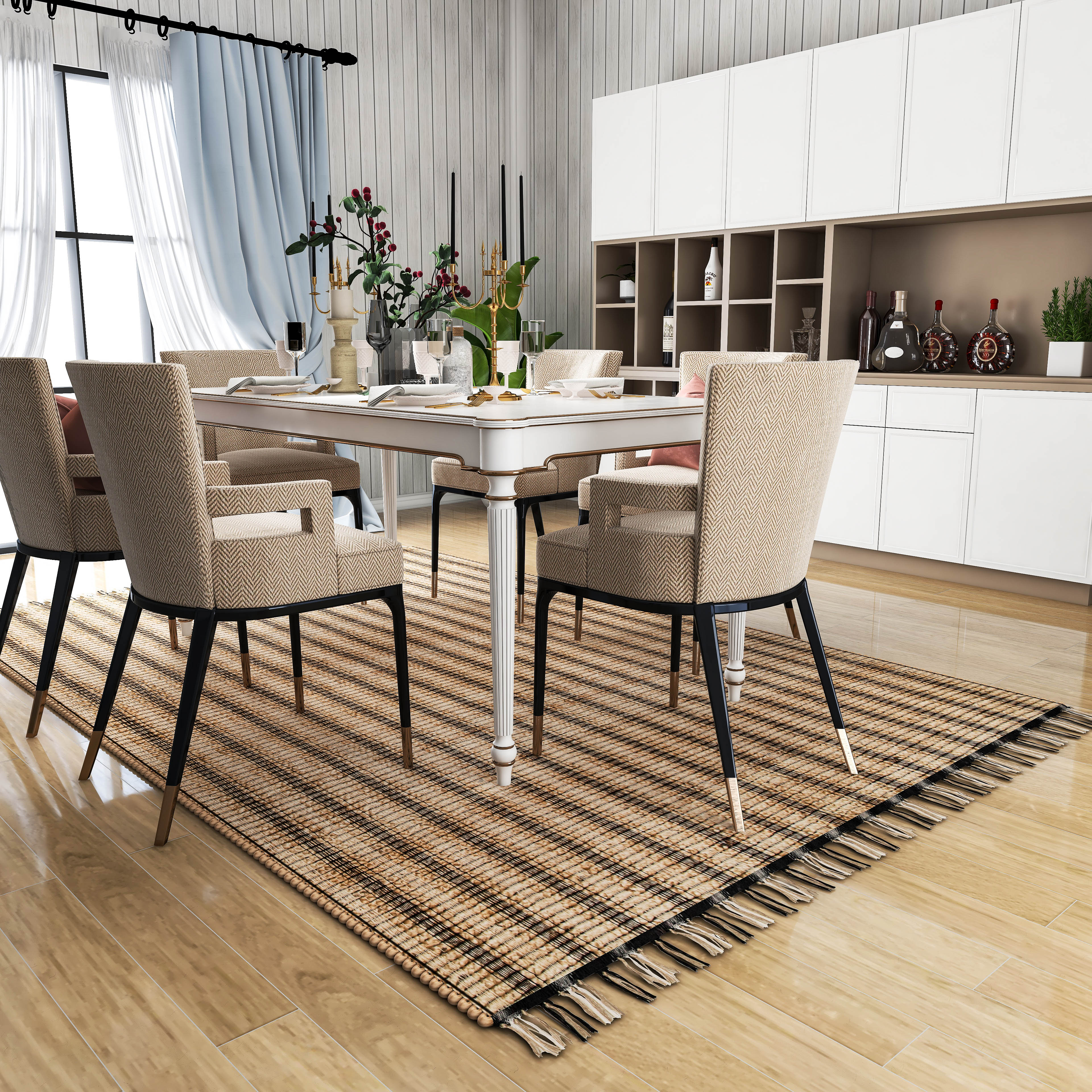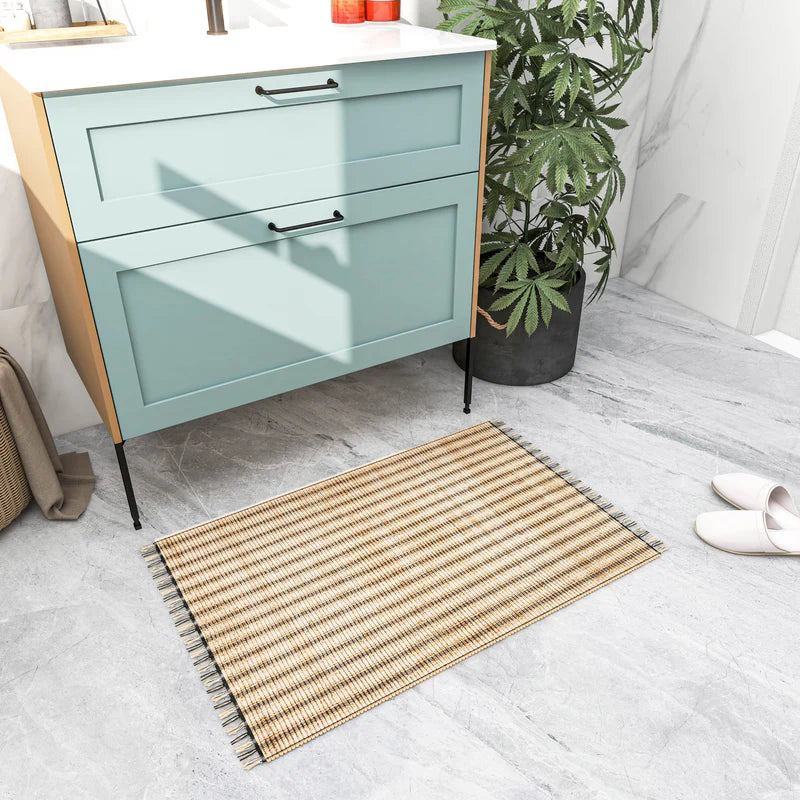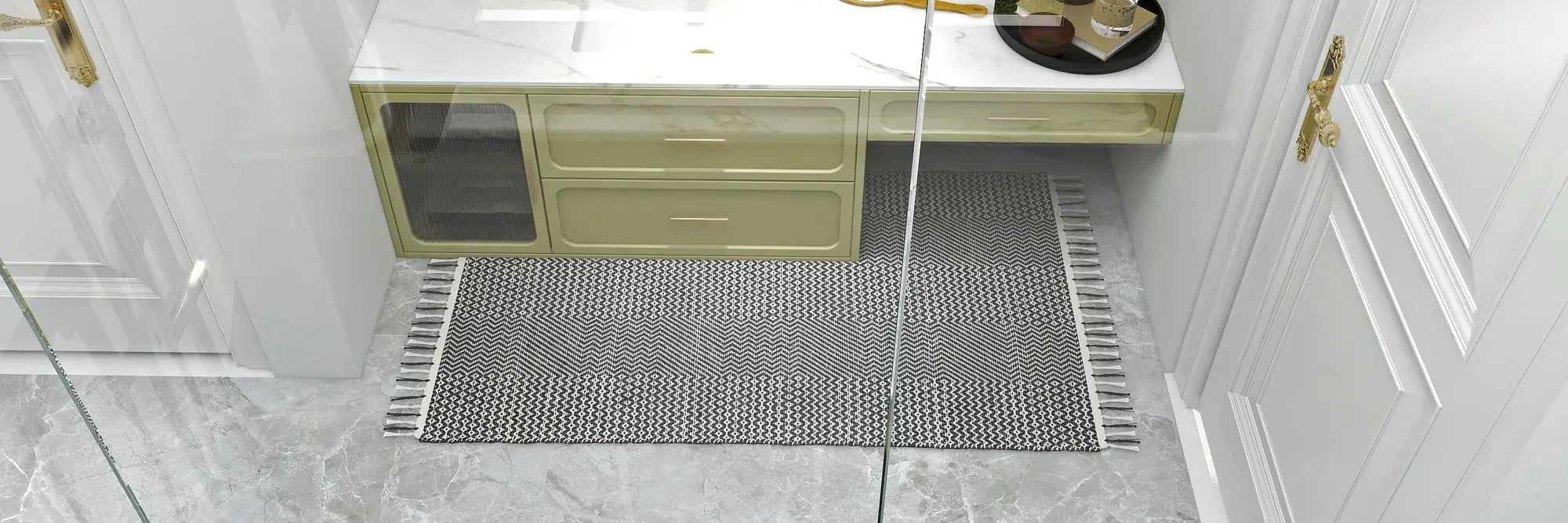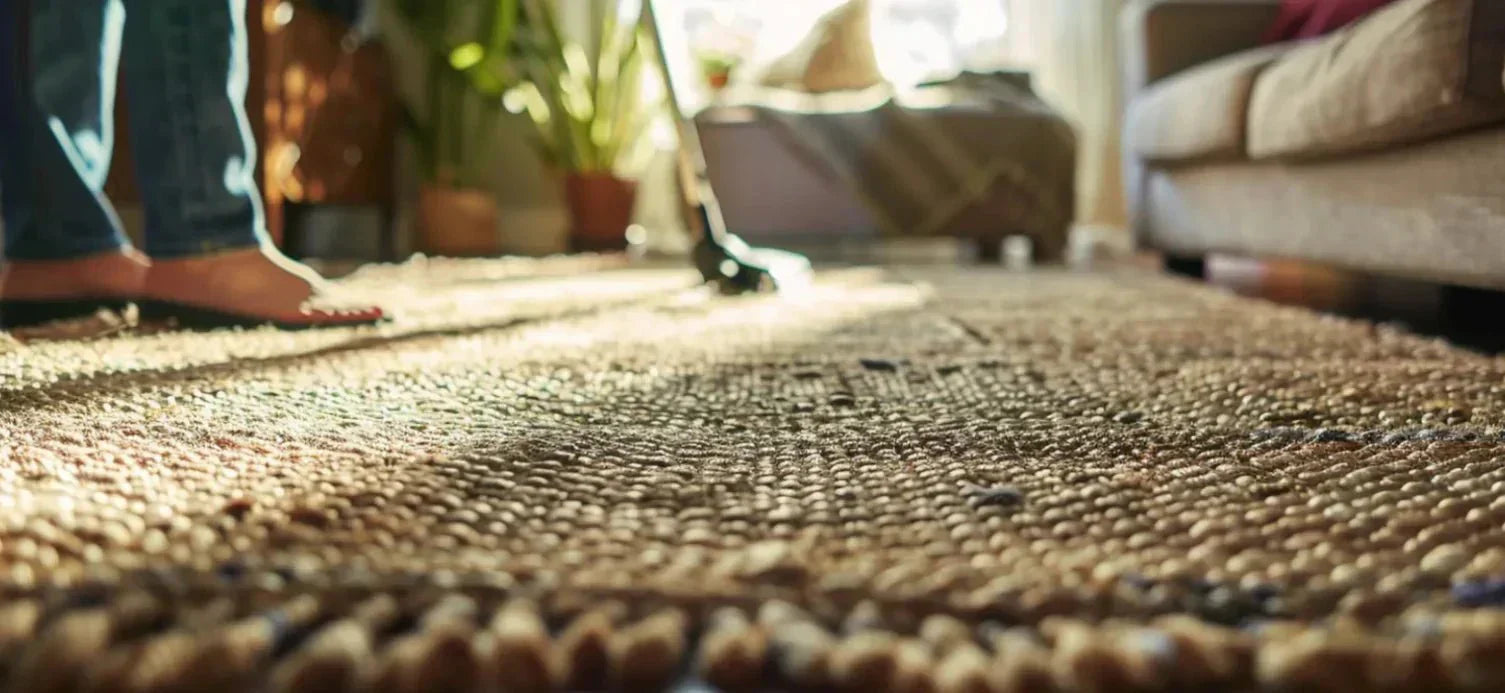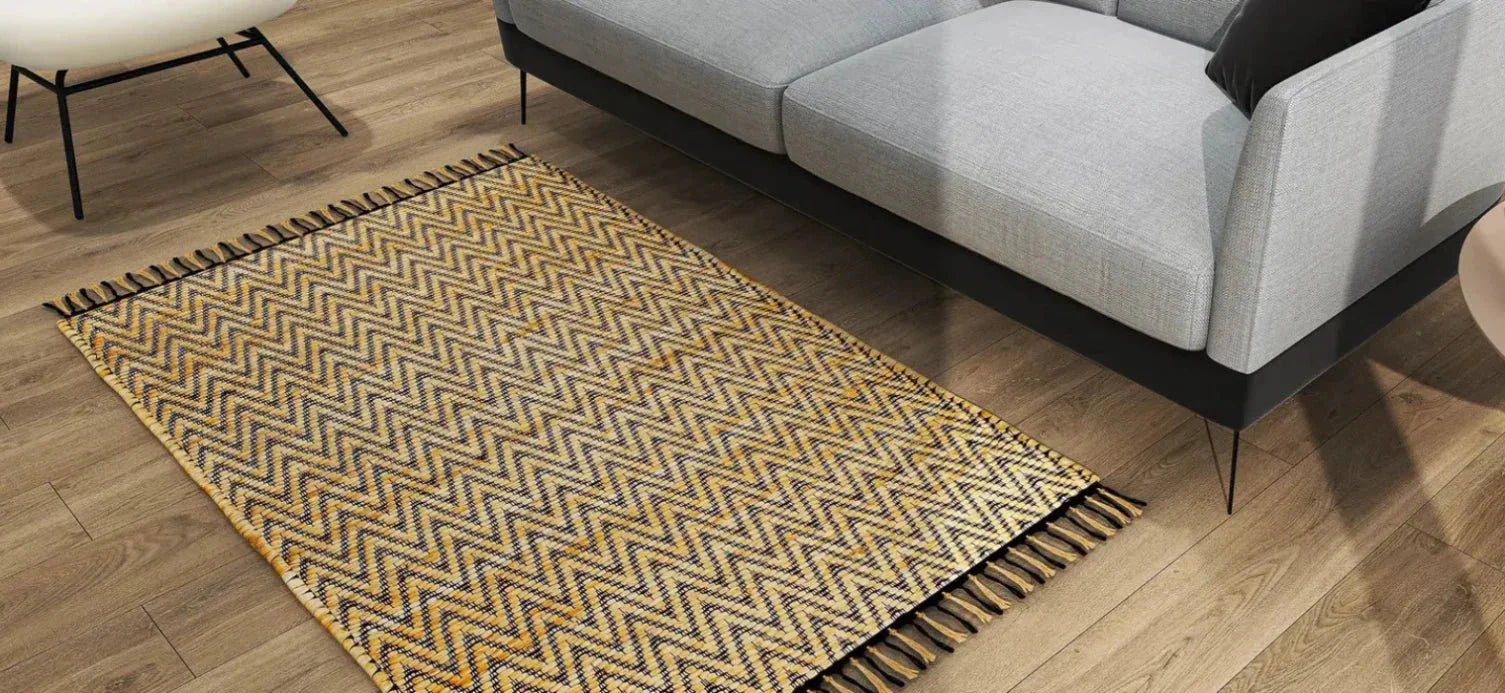
Sisal vs Jute Rugs: Which Natural Fiber is Best for Your Home?
Key Takeaways:
- Sisal is more durable and ideal for high-traffic areas.
- Jute is softer and better for low-traffic spaces.
- Both materials are eco-friendly, but sisal resists stains better.
- Jute sheds more due to its softer fibers, while sisal is more resilient.
Sisal vs jute rugs are two of the most popular choices when it comes to natural fiber rugs. Both materials offer a rustic, eco-friendly charm to your home, but they differ significantly in terms of texture, durability, and ideal usage.
Understanding these differences can help you choose the perfect rug for your space.
In this comprehensive guide, we’ll explore everything you need to know about these two materials, covering the pros and cons of jute rugs and the pros and cons of sisal rugs and helping you decide which one better suits your needs.
What is Jute Rug?
Jute rugs are crafted from fibers of the jute plant, a soft, woody plant predominantly grown in India and Bangladesh. This fiber is known for its rich, golden sheen and is often called the "golden fiber." A jute rug is ideal for areas that require a soft, earthy feel, making it a popular choice for living rooms, bedrooms, and under furniture where comfort is key.
One of the defining characteristics of jute is its softness. Compared to other natural fibers like sisal or seagrass, jute is the most comfortable underfoot. This makes it a perfect option if you're looking to add texture and warmth to spaces where you walk barefoot.
What is Sisal Rug?
A sisal rug is made from fibers of the agave plant, native to Mexico. These fibers are much coarser and more durable than jute, making sisal an excellent choice for high-traffic areas. What is sisal rug made of? Agave fibers are spun into thick, tough threads that can withstand wear and tear, making sisal one of the most resilient natural rug materials available.
The texture of sisal rugs is rougher than that of jute, so while they’re not as soft underfoot, their durability makes them a great choice for hallways, entryways, or any area exposed to frequent use.
Jute Rug vs Sisal: Which is More Durable?
When comparing jute vs sisal rugs, the main difference lies in durability. Sisal, due to its coarse nature, is the tougher material, often used in high-traffic areas like hallways or mudrooms. On the other hand, are jute rugs good? Yes, but they are best suited for areas with moderate foot traffic, as their softer fibers can wear down more quickly than sisal.
Sisal rugs are also more resistant to stains and general wear, which makes them preferable for homes with children or pets. Jute, while softer, is less durable and can be more prone to damage, especially when exposed to moisture or heavy use.
What is Jute Rug Made of?
Jute rugs are made from plant fibers that are naturally soft and shiny. These fibers are harvested, spun into threads, and then woven into rugs. Jute’s natural luster and softness make it a favorite for adding a casual, organic look to any space. However, because jute fibers are more delicate than other natural fibers, these rugs are best for low-traffic areas.
What is Sisal Rug Made of?
Sisal rugs, on the other hand, are made from the fibers of the agave plant. The extraction process involves decorticating the leaves to collect the long fibers, which are then spun into strong, thick threads. This process results in a material that’s durable, but rougher to the touch compared to jute.
Pros and Cons of Jute Rugs
Pros:
- Soft and Comfortable: One of the softest natural fiber rugs, making it perfect for low-traffic areas like bedrooms or cozy living rooms.
- Eco-Friendly: Jute is a renewable resource, harvested annually, making it one of the most sustainable rug materials.
- Affordable: Jute rugs are often more budget-friendly than sisal, allowing you to introduce natural elements into your decor without breaking the bank.
Cons:
- Less Durable: Jute is prone to wear in high-traffic areas and can break down faster than sisal when exposed to moisture.
- Stain-Prone: Due to its softness, jute doesn’t resist stains as well as other fibers, and it’s difficult to clean.
Pros and Cons of Sisal Rugs
Pros:
- Highly Durable: Sisal is known for its resilience and is an excellent choice for high-traffic areas like hallways and entryways.
- Stain Resistant: Sisal's coarse texture makes it more resistant to stains and general wear than jute.
- Eco-Friendly: Sisal is a biodegradable and renewable resource, making it a sustainable choice.
Cons:
- Coarse Texture: Unlike jute, sisal is rough underfoot and may not be ideal for areas where you frequently walk barefoot.
- Prone to Water Damage: While sisal is durable, it doesn't do well in high-humidity environments or areas exposed to water.
Sisal vs Jute Rugs – Which is Right for You?
In the battle of sisal vs jute rugs, the best choice comes down to your needs. If you need a rug for a high-traffic area like an entryway or hallway, sisal is the better option due to its strength and durability.
However, for low-traffic areas where comfort is a priority, such as bedrooms or lounges, jute is a better choice. Both materials are eco-friendly and bring natural beauty into your home, but their differences in texture and durability will determine which is right for you.
FAQs
Is sisal better than jute?
Sisal is better for high-traffic areas due to its durability, while jute is softer and suited for low-traffic spaces.
What is the downside of sisal carpet?
Sisal is coarse and prone to water damage, making it uncomfortable underfoot and less ideal for humid areas.
Which sheds more, sisal or jute?
Jute sheds more than sisal due to its softer and looser fibers.





